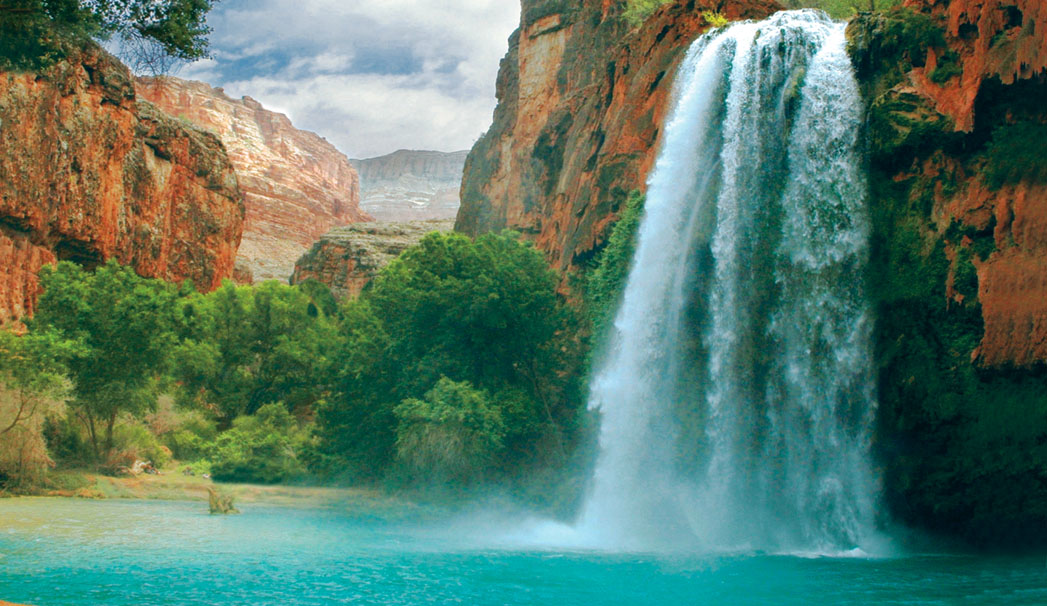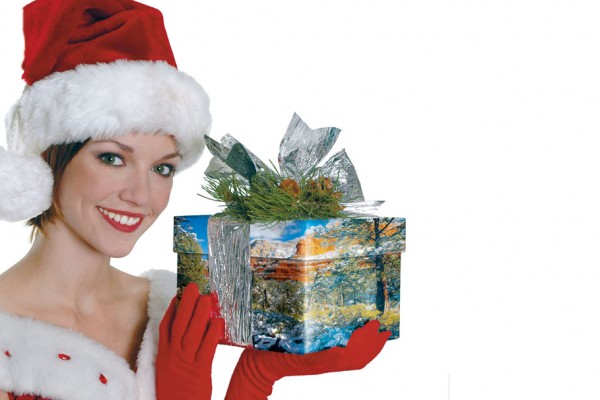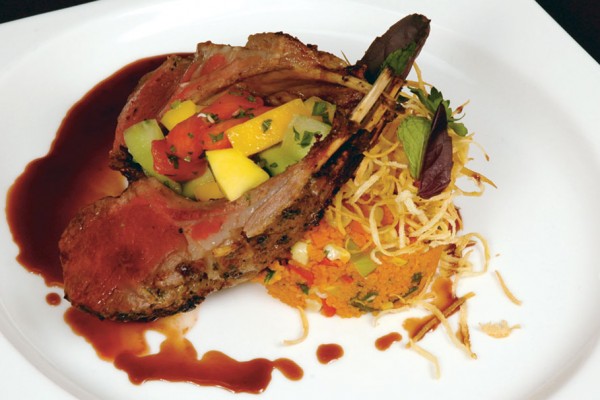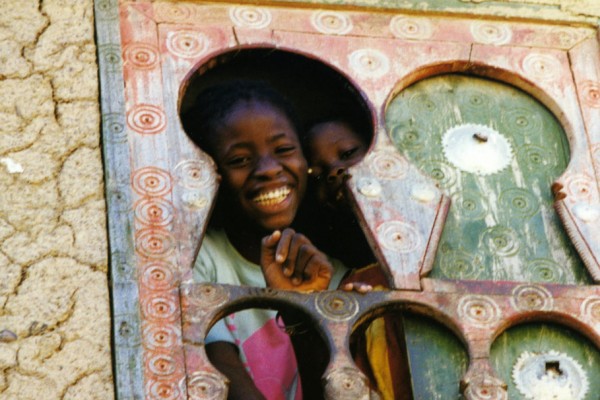At the far west end of the Grand Canyon, a turquoise-blue creek cuts through 14 miles of sheer red rock cliffs, meandering along travertine dams and tall cottonwoods. Waterfalls crash down as much as 200 feet into pools that have lured swimmers since 1000 A.D., or just around the time Leif Ericson “found” North America and dubbed it Vinland. This is Havasu Canyon, home of the Havasupai (Havasu ’Baaja) tribe. There’s a hiking trail through the canyon, yet otherwise it remains largely untouched by Anglos – it’s the only area in the United States where mail is still delivered by pack train; attempts to write down the local language, Havasupai, only began about 20 years ago. This past spring, Sedona Monthly, accompanied by an experienced guide from Oak Creek Canyon, spent three days trekking nearly 30 miles into the canyon. It was hot, crowded and dusty, but it was also a slice of paradise right in our backyard.
Day One
It’s 9:30 a.m. on a spring Monday, and our first illusion about Havasu Canyon has already been shattered. After traveling more than 60 miles on Indian Road 18 we’ve seen only two other cars, so we’ve allowed ourselves a sliver of hope that maybe, just maybe, we’d have the canyon all to ourselves, give or take the 450 Supai villagers who live here. But as we pull into the parking area at Hualapai Hilltop, we see them: Hundreds of cars – some belonging to the Havasupai locals but most with out-of-state plates – already line the side of the road and fill the central parking area. With the Travel Channel continually rerunning a segment on Havasu Canyon and its majestic waterfalls as part of its Grand Canyon episodes and Outside magazine having declared the pool at the base of Havasu Falls one of the ten best U.S. swimming holes in 2003, it hits home that expecting solitude here was probably wishful thinking. We’ll just have to settle for beauty.
We hit the trail a little after 10 a.m. and the sun is already intense. We’re meeting our guide, Steven “Benny” Benedict of Touch the Earth Adventures, at a village about eight miles from the trailhead. From there, Benny will lead us to the campground – our home for the next two nights – and the famed waterfalls. Benny, a middle-aged Oak Creek Canyon resident who began guiding tours in 1996 – his tanned skin, sinewy muscles and affinity for Teva sandals would be a dead giveaway on What’s My Line? – leads about ten trips into Havasu Canyon each year. He’s also worked as a national park ranger in Montana’s Big Horn National Park and as a state park ranger in Jerome. He leads trips to all sorts of exotic locales – the Galapagos Islands, Costa Rica, the Canadian Rockies – but Havasu Canyon has held a special place in his heart since his first trip here with friends in 1986.
“My first idea was that we were going to come upon an idyllic, nature-loving tribe; I was taken aback by the village’s third-world feel,” Benny would tell me after we meet. “But the falls were as beautiful as any place I’d ever seen. It was much less known then – probably 75 percent less tourists.”
Well, Vive le Travel Channel, I think to myself as we step down the steep, dusty trail, passing mule trains, pack horses and backpackers. Lucky for us, Benny has hired a wrangler to transport our supplies into the canyon, so all we needed to carry was our water (Benny recommends two liters each way – I had four and ran dry about a quarter of a mile before the end on Day Three), snacks and cameras.




